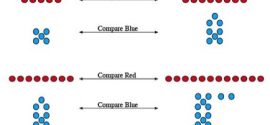Math: Processing Breakdowns
Processing Breakdowns
Students with slower processing speeds or executive-function problems are often no different from their peers in math proficiency in first and second grade; but as they confront multistep computations in upper elementary school tests, their scores tumble because they lack the skills necessary to produce organized, efficient output. These students aren’t losing their earlier skill base. New tasks demand efficient processing in different domains. The mathematics problems they now encounter need organizational skills involving planning and sequencing, as well as skills like handwriting, copying text, note taking, and other outputs requiring accuracy and efficiency. These skills are often difficult for dyslexic students. Students who struggle with processing multistep problems can improve their accuracy by employing several strategies that involve “walking” and “talking” problems through.
Woodin: An individual student can process auditory, visual information, and produce verbal and motor output with varying degrees of accuracy and at different rates. This lack of integration across modalities can result in frustration. Imagine how frustrating it must be for a highly verbal student whose pencil cannot keep pace with his racing thoughts, or the less verbally gifted student who finds it difficult to explain his written solution to a math problem—he can see the problem, he knows how to solve it, but he can’t present it orally. All these students benefit from teaching methods that provide organization and encourage the integration of information between visual images, language, and motor output. When students can process information across these three systems, they can access information across a variety of contexts.
Students who have visual/spatial and handwriting problems have difficulty learning and expressing number facts. Today, some educators suggest that students just use a calculator instead of learning their number facts, but this strategy bypasses essential skills and procedures. Truly knowing these skills is important. I have my students model large graphic organizers so they can easily manipulate numbers. I have them literally walk through math computations drawn on the floor to gain an understanding of the organizational framework. Students learn to sequentially process the information from these structures by moving their bodies over them as they describe each step. The episodic memory of this fun activity is then used to solve a similar problem presented on paper when seated at their desks.
Example Strategy: Use Multimodal Strategies To Teach Multistep Division
The video link provided above shows one way to tackle multistep mathematics problems. Here the student plans and talks himself through the problem and then literally walks himself through it. This exercise provides a consistent manner to rehearse the process verbally and, in turn, hear the process. The student is also led to develop his internal language skills, or “inner voice,” necessary to describe newly acquired concepts and procedures. This inner voice will help the student “talk” his way through similar problems in the future. In interviews with dyslexic adults, all of them successful professionals in fields from science and medicine to law to and education, we learn that many find talking through tasks or mouthing out words while reading is helpful throughout their lives.
About Chris Woodin:
Christopher Woodin is a specialist in the field of mathematics and learning disabilities. A graduate of Middlebury College and Harvard Graduate School of Education, he has taught extensively at Landmark School in Massachusetts. At Landmark School’s Elementary/Middle School Campus, he holds the Ammerman Chair of Mathematics. Christopher served on the Massachusetts Department of Education’s Mathematics 2011 Curriculum Framework Panel, and teaches graduate-level professional development courses during the summer through Landmark’s Outreach Program. Chris was the 1997 Massachusetts Learning Disabilities Association (LDA) Samuel Kirk Educator of the Year. He has presented at numerous international LDA and International Dyslexia Association (IDA) conferences, and has led math workshops to audiences across the country.
Christopher has published The Landmark Method of Teaching Arithmetic ©1995 and several journal articles. His latest project, Multiplication and Division Facts for the Whole-to-Part, Visual Learner: An Activity-Based Guide to Developing Fluency with Math Facts, is currently in press and due to be released in 2012. This comprehensive text features the methodologies and many of the activities that are described on The Yale Center for Dyslexia & Creativity’s website. To learn more about Mr. Woodin and his work, please visit his page on the Landmark School website and his own website.
Related
Math: Naming Problems
Math-specific concepts seem to be particularly difficult to master. In addition to being abstract, these concepts contain terms that confound students with visual similarity or auditory similarity between homophones.
Read More
Math: Memory Challenges
Often an educational evaluation will describe a dyslexic student as having “low working memory.”
Read More
Math: Counting & Comparing
A common response to students who are having counting problems is to simply have them do daily counting practice; however, students with counting and comparing difficulties also benefit from practice that utilizes patterns and relationships.
Read MoreMath Introduction
Since the YCDC website began in 2007, we have received many requests about how best to help dyslexic students struggling with math.
Read More